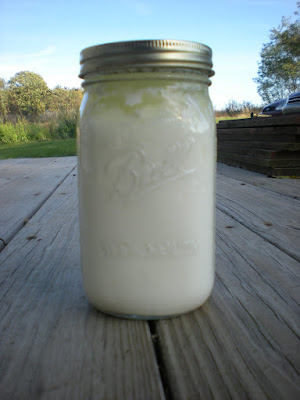
As the days get shorter and work gets more demanding, finding time to live sustainably undoubtedly becomes more challenging. However, one must fight on and prevail. The rewards are just that much sweeter.
Because only Monday and Tuesday of this week were forecast without rain, we needed to use any spare time possible to get next spring's garlic in the ground. Getting cloves planted before the soil freezes is imperative, so we knew it was now or never. As much as our lazy tendencies screamed at us to stay inside enjoying the warmth of the house, we knew we'd be disappointed if we missed the window to plant the garlic and were left to survive on the few cloves per week we get in our CSA box next spring.
Garlic planted in the fall produces much larger heads then garlic planted in the early spring, and when Andy and I think of the perfect garlic head, we think of gigantic heads with cloves the size of silver dollars! So, Andy canceled after-work plans yesterday to till up the garden, and then plant 26 organic, locally-grown cloves. He spaced them 4" to 6" apart with 1" to 2" of soil covering the cloves. We planted our garlic in a very sunny part of the garden, in soil that is well-draining and not stony ~ all important ingredients for big, robust heads of spicy goodness next spring!
Tonight, not getting home until after dark, we had quite a riot insulating and covering our garlic in the dark. We live in a climate where winter temperatures frequently drop below 0 degrees, so we always mulch 3-4 inches. Last year, we used dried leaves, but this year, we were fortunate enough to stumble upon enough free straw. The cool breeze outside and the satisfaction that our little bulbs of perfection were safe from the deep freeze of winter inspired a bit of our own warmth inside: a cup of the chamomile tea which we harvested this summer! Yum!
Spring seems so far off right now, but when the time comes, there is nothing quite like seeing those first little bursts of green, reaching towards the sun, letting you know fresh garden eating and days soaking up the sun are right around the corner. These nights in the dark planting with flashlights, jackets, and the need for a warm cup of tea are no price for the feeling of cutting the first garlic scapes of the season or slicing the spring's first fresh garlic cloves!








